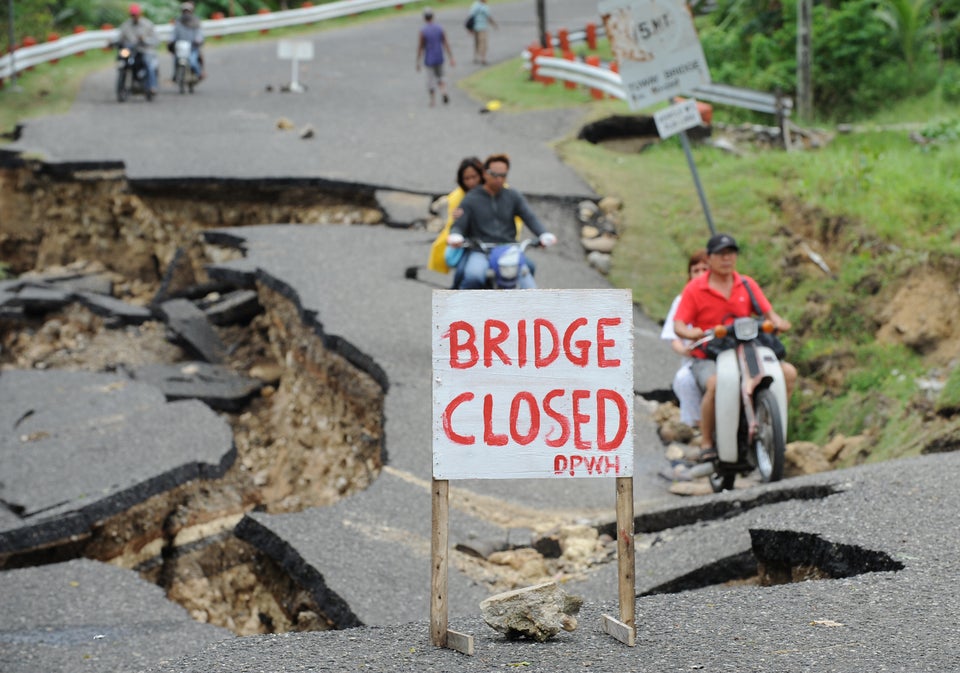LOS ANGELES -- After the Northridge earthquake struck in January 1994, creating a map showing the epicenter, magnitude and shaking took two months.
The technology was analog and relied on film from sensors that required collection and processing.
Today, making the information available on the U. S. Geological Survey website takes two to three minutes, according to seismologist Lucy Jones, a science adviser for risk reduction with the federal agency.
On Thursday, Jones, along with Thomas Jordan, director of the Southern California Earthquake Center at USC, and Kate Long, earthquake program manager for the state Office of Emergency Services, discussed how earthquake science has evolved in the past 20 years and how it benefits communities.
Before the Northridge quake hit early Jan. 17, 1994, the blind thrust fault on which it occurred was unknown.
Now, through GPS, sensors and mapping, more blind thrust faults have been charted. Areas with significant thrust faults, such as Ventura, are now designated special fault study areas, Jordan said.
A uniform earthquake rupture forecast has been developed, as has a national seismic map showing in colors the likelihood of high seismic shaking.
While the colors are overlaid on large regions, Jordan said, the goal is to winnow down the areas.
"What we want to do is improve our understanding on a smaller geographic level," he said.
The key is using science to increase safety and awareness.
Long said previous earthquake study involved the use of "windshield surveys": Law enforcement and firefighters would radio in damage they witnessed in the field. Now, a shake map captures the damage.
A program also is in place that allows the Federal Emergency Management Agency to estimate losses.
Perhaps the biggest breakthrough in technology involves an early warning system, which could alert people seconds before a quake hits.
That could allow a conductor to stop a train, a family to get into a secure location or a surgeon to pull back before making an incision.
While the technology is in place, the USGS lacks the staff to get it started. The agency, funded by Congress, receives half of what it did in 1980 in real dollars.
"We can save a lot of lives with that," Jones said. ___
(c)2014 Ventura County Star (Camarillo, Calif.)
Visit Ventura County Star (Camarillo, Calif.) at www.vcstar.com
Distributed by MCT Information Services
Support HuffPost
Our 2024 Coverage Needs You
Your Loyalty Means The World To Us
At HuffPost, we believe that everyone needs high-quality journalism, but we understand that not everyone can afford to pay for expensive news subscriptions. That is why we are committed to providing deeply reported, carefully fact-checked news that is freely accessible to everyone.
Whether you come to HuffPost for updates on the 2024 presidential race, hard-hitting investigations into critical issues facing our country today, or trending stories that make you laugh, we appreciate you. The truth is, news costs money to produce, and we are proud that we have never put our stories behind an expensive paywall.
Would you join us to help keep our stories free for all? Your contribution of as little as $2 will go a long way.
Can't afford to donate? Support HuffPost by creating a free account and log in while you read.
As Americans head to the polls in 2024, the very future of our country is at stake. At HuffPost, we believe that a free press is critical to creating well-informed voters. That's why our journalism is free for everyone, even though other newsrooms retreat behind expensive paywalls.
Our journalists will continue to cover the twists and turns during this historic presidential election. With your help, we'll bring you hard-hitting investigations, well-researched analysis and timely takes you can't find elsewhere. Reporting in this current political climate is a responsibility we do not take lightly, and we thank you for your support.
Contribute as little as $2 to keep our news free for all.
Can't afford to donate? Support HuffPost by creating a free account and log in while you read.
Dear HuffPost Reader
Thank you for your past contribution to HuffPost. We are sincerely grateful for readers like you who help us ensure that we can keep our journalism free for everyone.
The stakes are high this year, and our 2024 coverage could use continued support. Would you consider becoming a regular HuffPost contributor?
Dear HuffPost Reader
Thank you for your past contribution to HuffPost. We are sincerely grateful for readers like you who help us ensure that we can keep our journalism free for everyone.
The stakes are high this year, and our 2024 coverage could use continued support. If circumstances have changed since you last contributed, we hope you’ll consider contributing to HuffPost once more.
Already contributed? Log in to hide these messages.

